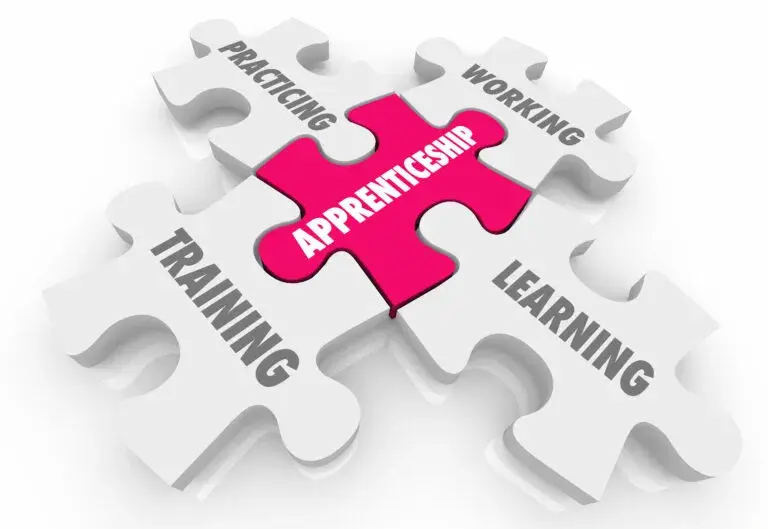What is the Apprenticeship Levy?
The Apprenticeship Levy is a simple funding avenue put into place to ensure all organisations have access to the training and apprenticeships they require.
In 2017 the Government implemented a new Training Tax called the Apprenticeship Levy, designed to fund apprenticeships throughout England. All organisations with more than a £3 million annual paybill are required to pay an additional 0.5% through their HMRC Gateway. This is held in a Digital Account to be spent with approved providers on apprenticeship training.
In addition, the Government also launched a range of new Apprenticeship Standards. These were designed in partnership with Employers to ensure that the programmes were fit for purpose and gave employers the training and skills they required. Consequently, there are now over 700 of these standards with more being developed by employer groups called Trailblazers. The old apprenticeship Frameworks (NVQ Qualifications) have been replaced by these new Standards.
Apprenticeship Levy paying vs Non-Levy paying process
Employers who pay into the Levy are required to select their training provider from a list called the Register of Apprenticeship Training Providers (RoATP) which is available through The Institute of Apprenticeships website. Every Apprenticeship Standard is listed here. When you select a Standard, you can use the “Find Apprenticeship Training Providers that deliver this standard” button on the right-hand side. Here, all of the contact details and feedback scores of providers are available to review.
There is a wealth of help and support available; most notably the Education Skills Funding Agency (ESFA) have some great videos on their YouTube channel.

Organisations who do not pay the Apprenticeship Levy are able to use the surplus funds within the system, allowing all organisations an allocation of funding to support their apprenticeships. The system is accessed online through your HMRC Government Gateway account. Learn how to access the account here.
Non Levy organisations are :-
- Limited to 10 apprentices at any one time
- Required to make a 5% Employer Contribution to the costs of the apprenticeship training, this is paid directly to the Training Provider.
Up to 25% of Apprenticeship Levy surplus can be transferred to other organisations. This can really help smaller businesses as it will give them the ability to have more than 10 apprentices and means they will not have to pay the 5% Employer Contribution. Some Local Authorities and Training Providers can help with this process, it is actually quite straightforward as you can see from this video.
The management of the Apprenticeship Levy is not complicated and the payments are automatic. While the training continues there is no requirement for any input from employers.
Payments made to the Training Provider are based on:
- Agreed cost of the programme minus 20% Completion Element (which is automatically paid from your account to the training provider after EPA is completed) and then divided by the number of months the learners are expected to be on programme. For example:
- Lean Manufacturing Operative 12 month duration
- £6000 apprenticeship cost
- £1200 20% Completion Element
- £4800 divided by 12
- £400 per month per apprentice
Basic rules of apprenticeships
- The minimum term for any apprenticeship is 12 months.
- Apprenticeships are not complete until the independent End Point Assessment (EPA) is completed. This is not performed by your training provider but by an independent organisation approved to perform this role by the Government using the Register of Approved Assessment Organisations (RoAAO) and all approved organisations can be found on the Institute of Apprenticeships website.
- Anyone over the age of 16 is eligible for an apprenticeship, as long as they are in work and their contract is for longer than the duration of the apprenticeship
- Apprentices are required to either have, or achieve, a Level 1 or Level 2 in English and Maths (called Functional Skills) during the apprenticeship. This will be delivered by your training provider and is funded outside of the Apprenticeship Levy.
- Each Apprentice is required to spend 20% of their working time on training; this is called Off-The-Job training. The name does not mean day release to college; find out more about Off-The-Job training here. Your chosen training provider will be able to give you much more specific advice and guidance relevant to the apprenticeship you have chosen.
- All learning must take place during the Apprentices paid working hours.
- Apprenticeships can be delivered on-site, online, at the Training Providers location or a mixture of both. Currently, most are being delivered online. This does not mean just eLearning but more of a virtual classroom in most cases with continued guidance and support. You will need to decide which is the best for you.
Don't miss out
It must be remembered that funds in an organisations Digital Account expire after 2 years if they are not spent on apprenticeships. The money is then taken and recycled into funding for other apprenticeships by the Government.
Apprenticeship Levy funding can only be spent on eligible apprenticeship courses and only through approved training organisations.
A series of freedom of information requests by the CIPD has found nearly £2bn of employers’ levy funds expired and was returned to the Treasury between May 2019 and March 2021 because employers were unable to spend the money themselves on apprenticeships! Reap the benefits of the Apprenticeship Levy and upskill your workforce with the skills they need to maximise proficiency within the organisation.
Share this
You May Also Like
These Related Stories

How To Implement Your Training Idea With Apprenticeship Levy Funding

Apprenticeships - What Employers should consider


No Comments Yet
Let us know what you think